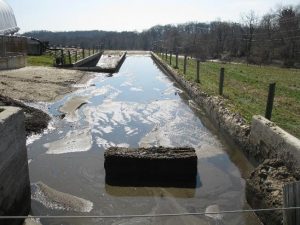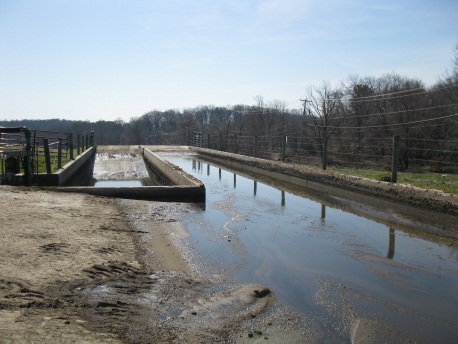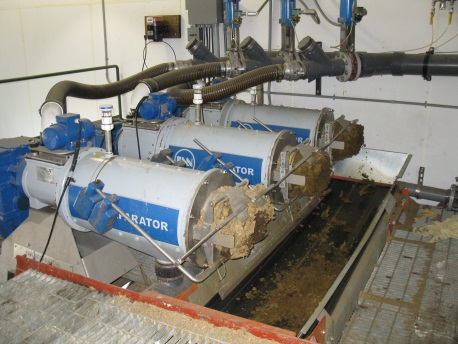Purpose
This presentation offers information about a low-energy high-performance manure and/or wastewater aeration technology. Referred to as “Widespreading Induced Surface Exchange” (WISE) aeration, its performance is from 4 to 10 times more efficient per watt of energy used compared to traditional bubble blower technology for aeration. Even though Aeration is well known to provide extensive odor reduction or elimination, its use has not been implemented because of the high energy costs associated with running blowers. This explains why very little is published about other value offered by aeration. The presentation discusses WISE aeration, many unexpected benefits, and unstudied results.
This presentation will quickly review the 2019 Waste to Worth presentation previously offered and will then offer additional information learned in the past 3 years, including approximately 20 key points. For those wanting to visit an actual working site before or after the conference, equipment is installed at a regional composting facility approximately 1 hr away from the Waste to Worth facility, near Wauseon OH.
What Did We Do?
Different manufacturers have created “floating aerators” over the past decades. Some have different issues than others, but all are installed in one of the most hostile environments at any enterprise. PondLift brand equipment has been installed at various farms, domestic wastewater treatment sites, and composting facilities to bring their ponds into full aerobic treatment, with most sites desiring odor elimination, while also allowing their effluent to be sent to growing crops through irrigation equipment, lowering their effluent handling costs while increasing the value of their effluent since it is often foliar fed, offering as much as 70% yield increase per unit of fertilizer. The author has been at each site to maintain equipment and learn more of its performance and learn more about results, expected and unexpected. Among the PondLift equipment installations, there are 3 pond installation sites in Ohio, and another at a dairy farm near Paw Paw MI, easily visited for those who would want to personally visit such sites. Other sites are further distance from Ohio.
What Have We Learned?
The installations have confirmed that odor elimination is very much possible through low-energy-use WISE aeration, while also preparing the effluent to be used by irrigation equipment for foliar feeding. Although Odor elimination is valuable, probably the most environmentally valuable result of aeration was the dramatic change in texture of the effluent (in both liquids and solids) so that when applied by traditional means, being “knifed in”, the treated manure was absorbed into the soil much faster than raw manure is absorbed into that soil. The timeframe is hours instead of days, reducing the potential runoff timeframe significantly, potentially eliminating significant runoff events. Given this observation at almost every site having WISE aeration, it became obvious that a method for quantifying the phenomena is needed, and this equipment needs to be defined so as to compare aerobically treated effluent to raw manure, preferably in a “side by side” process, while also being able to quantify manure runoff on different soil types, and different slopes of soils. While the presentation will also offer other phenomena data, the final portion of the presentation defines this equipment and procedures that might be adopted so as to study and quantify runoff, and compare runoff quantities to traditional distribution methods.
And for those who are interested in performing foliar feeding through automated manure nutrient distribution through irrigation equipment, the presentation will expand on several items recently identified, including the stratification that results from WISE Aeration, allowing irrigation without plugging pivot/circle nozzles. In addition, the presentation includes information about Struvite formation and its harvesting opportunity as well as control methods.
Future Plans
PondLift intends to offer equipment for use in studies focused on any phenomena of interest in manure or liquid waste treatment, as well as commercial use at farms. The political climate in future years will insist that potential runoff issues be addressed, updating Best Management Practices. In addition, it is now possible that manure odor be eliminated with a process which is financially feasible for farms.
A short discussion: Automation is valuable at farms. Bringing WISE Aeration to dairies and other farms which store liquid manure can help automate the manure storage/handling/disposal process. It is the opinion of the author that the small family dairy farm will continue to survive and thrive, given the advances in feeding/health/genetics at today’s farms, even though such farms offer a small percentage of milk products.
The fact that so many farms have limited potentially useable farm acres at small hilly locations, leads us to focus on improving their automation and reducing equipment and time spent on manure related work. To this end, work is progressing through PondLift, on a low cost “drop-in-place” sand separator which can easily be placed between the barn and the manure storage pit, allowing operators to remove sand before it gets to storage, which then allows the storage pit to be converted to aerobic treatment, which then allows automated manure nutrient distribution methods to be considered. Lastly, work continues through an associated enterprise on the SPEWPLI (self-propelled extremely-wide portable linear irrigator) which will be able to attach to a manure pumpers hose at a distant field, and distribute manure nutrients to the crop at the 1,500gpm rate often used by manure pumpers. This is important for farms which are more suited to pumping at high rates to distant fields.
Authors
John Ries, Managing Member PondLift LLC, retired professional engineer
Corresponding author email address
ries@iw.net
Additional Information
PondLift.com
The authors are solely responsible for the content of these proceedings. The technical information does not necessarily reflect the official position of the sponsoring agencies or institutions represented by planning committee members, and inclusion and distribution herein does not constitute an endorsement of views expressed by the same. Printed materials included herein are not refereed publications. Citations should appear as follows. EXAMPLE: Authors. 2022. Title of presentation. Waste to Worth. Oregon, OH. April 18-22, 2022. URL of this page. Accessed on: today’s date.







